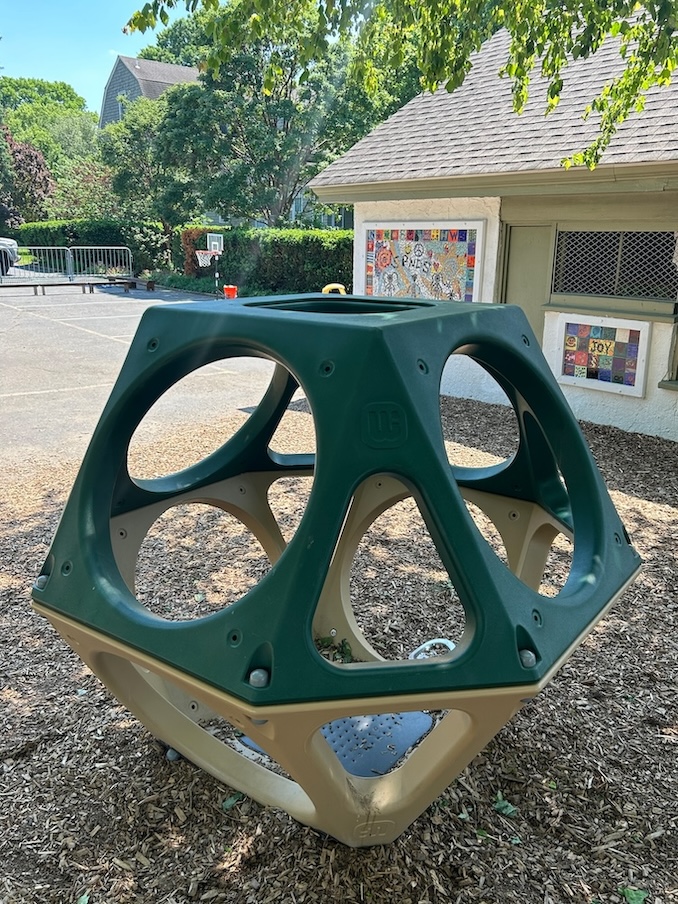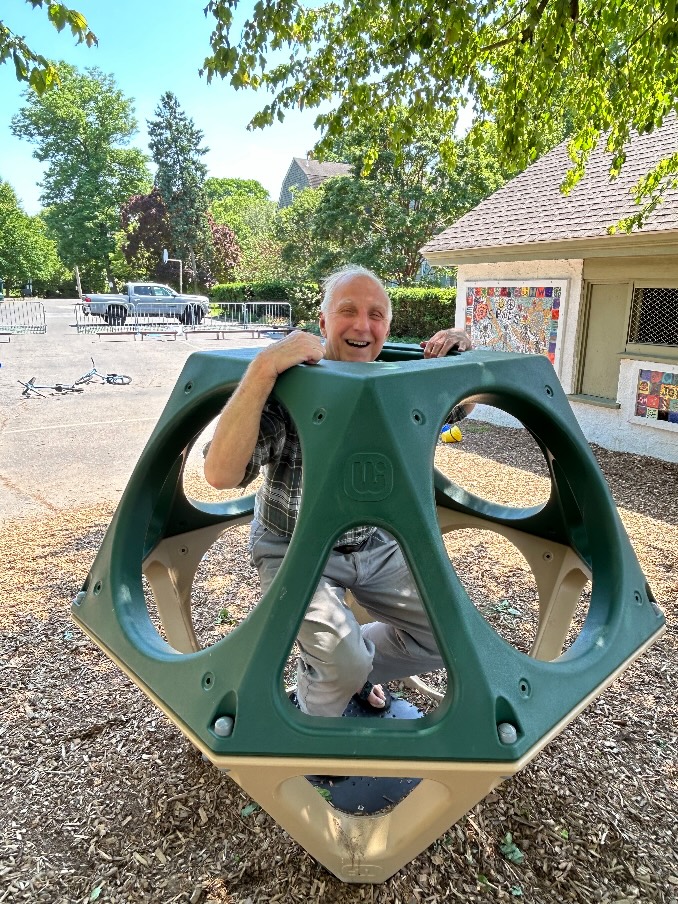Roman dodecahedra between Southeast Asia and England, part 3
Language Log 2024-05-24
I stopped short when I passed by this piece of gym equipment in a kindergarten playground near my home.
"What," I thought, "another Gallo-Roman dodecahedron right in my own backyard? Am I seeing things because I've been too preoccupied with Gallo-Roman dodecahedra (GRd) for the past few weeks?"
But this was not a dodecahedron; it was (I think) a modified decahedron, and SFAIK it has nothing to do with the alphazodiac.
Speaking of which, here is a dodecahedron created by a Slovakian astronomer, each face labeled with its appropriate constellation of the zodiac:
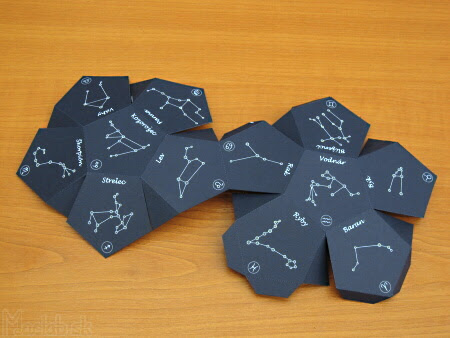
Folded and glued:
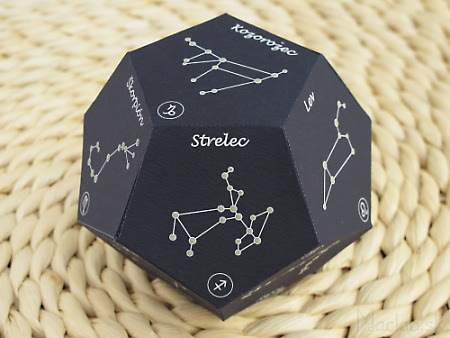 (source)
(source)
Here is an Italian leather and wood dodecahedron decorated with the signs of the zodiac:
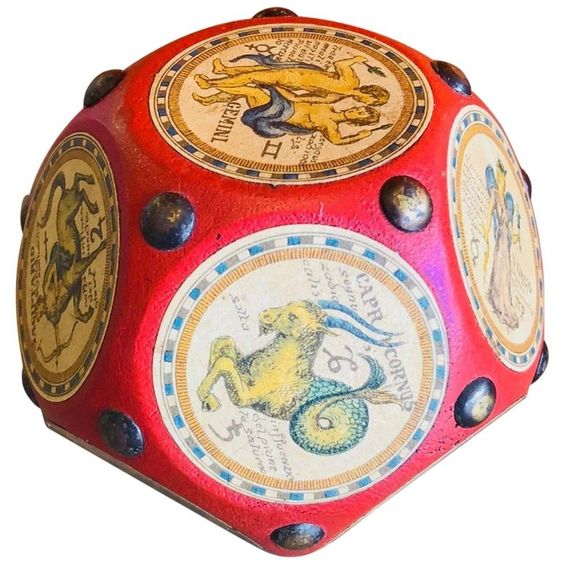 (source)
(source)
The knobs at the vertices are said to be for the protection of the faces when the device is placed on a surface. I myself, during an idle moment today, thought that, whatever else they may have been intended for, the knobs keep the device from rolling over onto another face. The five projecting "feet" keep the dodecahedron solidly and securely seated (Gr -edron < hedra, a side, base, seat < IE base *sed- > L sedere, sit) (Collins)
As for the purpose / use of the dodecahedra, Thomas Lee Mair offered these helpful notes:
I was relieved to see that someone (Brian?) mentioned a possible military association, such as rangefinding. The organization of the legions is a subject worthy of consideration. We all know the importance of the aquila to the generals, and to the emperor. I will never forget the scene in "I, Claudius" when the Caesar Augustus is informed that his armies have been lost, in Dacia I believe. Caesar, played by Brian Blessed, enters into an apoplectic fit, screaming like a baby having a tantrum: "I want my Eagles back! I want my Eagles back!" It's an unforgettable scene, and not easily understood until we realize that the Eagles were the embodiment of the Roman Legions. The tantrum is frightening to witness.
There are so many plausible ideas mentioned in the comment section to your previous two posts that I hesitate to put forward another idea, based purely on speculation. To me it seems apparent that these were restricted items, reserved either for scientists, scholars, astrologists, priests, or generals. Otherwise they would appear in the literature. It might be worth considering if these were symbols of military authority that were held in secret, to be returned to Rome or to be buried if the legion were in desperate straits.
This reasoning is compatible with the GRd as astronomical-calculatory device hypothesis that I thought they were from the beginning. It also has the added advantage of explaining where they have been found. I surmise that the GRd were like basic, simplified, portable astrolabes (precursors to the sextant), which were amazingly versatile and could solve more than a thousand different kinds of astronomical and mathematical problems.
In modern times, the Irish mathematician Sir William Rowan Hamilton (1805-1865) invented a mathematical game called the Icosian game, which involved finding a Hamiltonian cycle that followed the edges of a dodecahedron and passes through all of its vertices. It came close to becoming a commercial success and he even created a travel version of the game.
Here are four blog posts on "Roman Dodecahedrons" (I, II, III, IV) by a scientifically minded Australian engineer tinkerer named Gavin. They are extraordinarily detailed and attentive to the demands of verifiability and falsifiability. Although he is wedded to the idea that the GRd are string games in the Hamiltonian mode, I am pleased that he takes into consideration the astronomical, zodiacal, calendrical aspects of the device.
Selected readings
- "Roman dodecahedra between Southeast Asia and England, part 2" (5/12/24)
- "Ask Language Log: One = only one?" (7/22/11) — philosophy of Sir William Hamilton
- "Roman dodecahedra between Southeast Asia and England" (4/30/24)
- "Wheat and word: astronomy and the origins of the alphabet" (3/15/24) — with references to seven substantial papers on this subject by Brian Pellar
- "The Alphabet and the Zodiac" (12/6/22)
[Thanks to Jing Hu]
